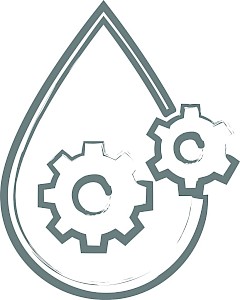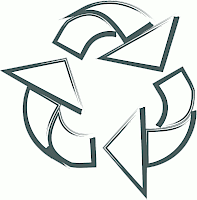The DOs and DONT’s of Used Oil
 First and foremost, I want to make something clear: USED oil and WASTE oil are not the same. According to the Environmental Protection Agency (EPA), used oil is defined as any oil, either synthetic or refined from crude oil, that has been used and, as a result of such use, is contaminated by physical or chemical impurities. Waste oil, on the other hand, is any oil that has been mixed with a known hazardous substance such as glycol (antifreeze) or kerosene. Animal and vegetable oils are excluded from the EPA’s definition of used oil, but they are considered waste oil when they are utilized as a lubricant. This article will focus on used oil, with the objective being to educate lubrication and reliability personnel about what to do (and what not to do) with it. Establishing proper procedures in this department is crucial to upholding environmental integrity and a safe work environment.
First and foremost, I want to make something clear: USED oil and WASTE oil are not the same. According to the Environmental Protection Agency (EPA), used oil is defined as any oil, either synthetic or refined from crude oil, that has been used and, as a result of such use, is contaminated by physical or chemical impurities. Waste oil, on the other hand, is any oil that has been mixed with a known hazardous substance such as glycol (antifreeze) or kerosene. Animal and vegetable oils are excluded from the EPA’s definition of used oil, but they are considered waste oil when they are utilized as a lubricant. This article will focus on used oil, with the objective being to educate lubrication and reliability personnel about what to do (and what not to do) with it. Establishing proper procedures in this department is crucial to upholding environmental integrity and a safe work environment.
Recycle and Conserve
When it comes to a precious resource like oil, we need to make every effort to recycle whenever possible. There are several efficient ways to turn used oil into usable oil again; for example, some oils can be cleaned and re-used through filtering or reconditioning. Utilizing a dedicated filter cart is a great way to recondition a used oil to prolong its life and save costs along the way. There is also the practice of re-refining used oil to use as a base stock for new lubricating oils.
In some instances, used oil can be repurposed. A common example is recycling oil to be used for gasoline and coke production through a petroleum refinery. Recycled oil is also used for energy recovery: water and particulates are removed, and the remaining oil is burned as a fuel source for energy production. Although this is an efficient way to repurpose used oil, it is not always preferred because you’re only getting one re-use out of the oil. Once it is burned, it’s gone.
 Storage and Handling of Used Oil
Storage and Handling of Used Oil
I prefaced this article by differentiating between waste oil and used oil because we often see used oil being wasted when it isn’t necessary. I’m not saying we’ve seen people dumping out oil, but not knowing the difference between waste and used oil can result in unnecessary disposal - this is where used oil storage and handling comes in.
Collecting the used oil is the first step, but proper storage and handling should be the key focus. Start with labelling - ensure that the oil containers are properly labelled and conspicuously marked as “USED OIL” or “WASTE OIL.” Next, ensure that the new oil containers are separated from each other and far away from any new lubricants to avoid potential cross-contamination. Anytime personnel are working with or near waste oil and used oil, good handling practices are crucial for a safe and contaminant-free lubrication environment. Improperly handling waste oil can potentially be a hazard, depending on what contaminant or exposure caused the oil to become waste oil. Used oil is less of a safety hazard but is still dangerous due to weight, transport and spill potential.
 Training
Training
When it comes to lubrication, some people are unconsciously incompetent. In other words, they don’t know what they don’t know. So, a good fundamental knowledge of lubrication is priceless. Noria’s Machinery Lubrication Fundamentals or Introduction to Lubrication Fundamentals online training courses (available at store.noria.com/online-training) are great ways to get started on the path to safe and efficient used oil practices.
Key Takeaway Do’s and Don’ts
- Do recycle used oil if possible. Conserve what oil you can; it is a precious resource.
- Do stay vigilant of your surroundings when handling used and waste oil.
- Do recondition used oils with a dedicated filter cart or other similar devices.
- Do seek out training and education to assist progress in the lubrication program as far as used oil practices are concerned.
- Don’t waste used oil. Do label used oil containers so that no accidental waste happens.
- Don’t store Used and Waste oil near new lubricants to prevent potential cross-contamination.
- Don’t handle any lubricants without the required PPE. Do follow all facility safety regulations while doing so.
